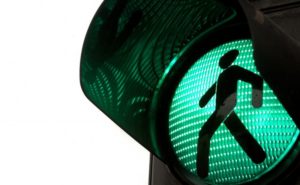Researchers at the University of Manchester are proposing the use of gait recognition in airport screening.
As detailed in a recent report in the IEEE Transactions on Pattern Analysis and Machine Intelligence (TPAMI) journal, the researchers, led by The University of Manchester’s Dr. Omar Costilla Reyes, developed a system that can operate through floor sensors, assessing unique patterns associated with an individuals’ footsteps. The researchers’ trained their AI system on a 20,000-footstep database based on 127 individuals, and found that it could identify a certain sample of these individuals with an accuracy of about 99.3 percent.
The obvious advantage of the system is that it would allow for passive identification in airport screening, but such an application would face some major obstacles. Facial recognition has already established itself as the dominant biometric modality in automated airport screening, and it can be used for passive identification as well; moreover, it’s probably easier to deploy, given that most facial recognition systems can operate through standard camera equipment (and even mobile cameras), whereas a system based on floor sensor may require some major renovations in an airport environment.
But there are other applications for this technology, The University of Manchester’s Dr. Costilla Reyes also noting that it could be used to detect signs of cognitive decline and mental illness in the healthcare market. That could offer a novel solution in a tricky and ambiguous area of diagnosis. Doctors can’t walk in their patients’ shoes, but they might learn a lot from their footsteps.
Source: The University of Manchester
–
May 28, 2018 – by Alex Perala








Follow Us